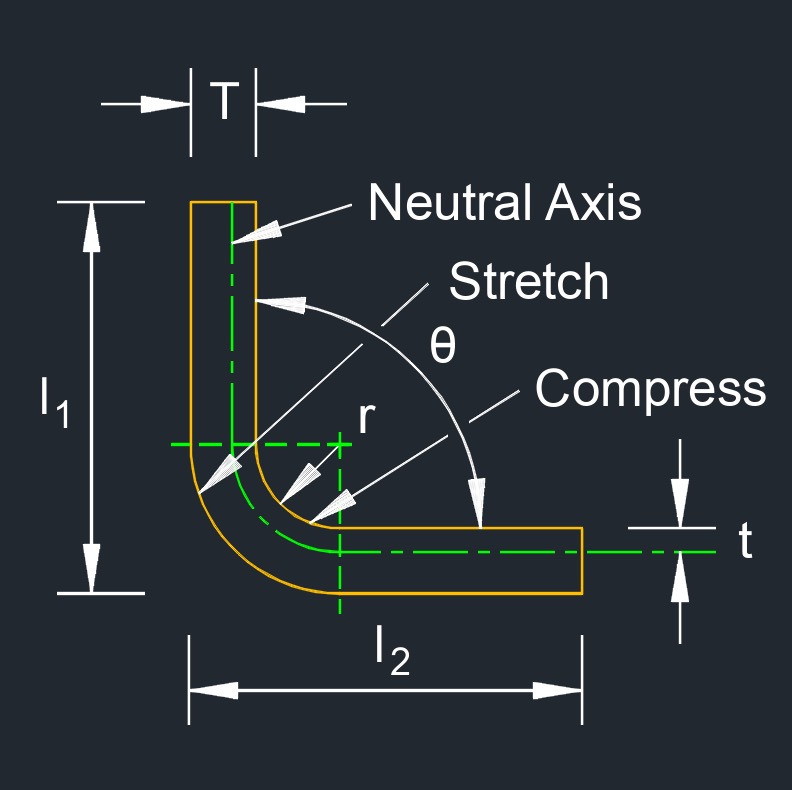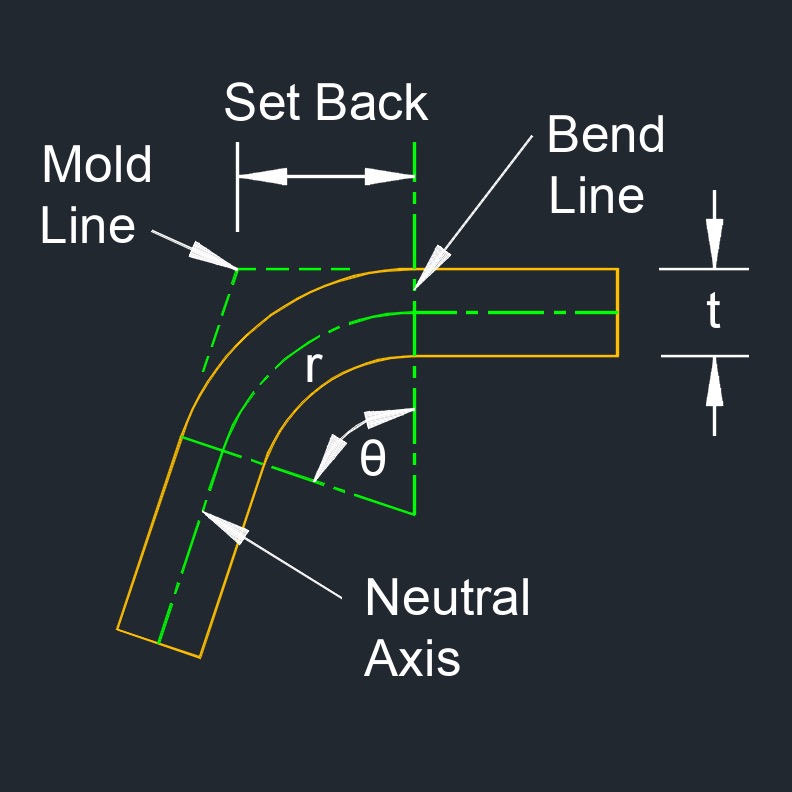K-factor Constant
K-Factor Constant Formula |
||
|
\( K \;=\; \dfrac{ t }{ T }\) (K-factor Constant) \( t \;=\; K \cdot T \) \( T \;=\; \dfrac{ t }{ K }\) |
||
| Symbol | English | Metric |
| \( K \) = K-factor Constant (See Physics Constant) | \(in\) | \(mm\) |
| \( t \) = Neutral Axis | \(in\) | \(mm\) |
| \( T \) = Material Thickness | \(in\) | \(mm\) |

K-factor constant, abbreviated as K, in materials, is the thermal conductivity or thermal conductance, is a constant that represents the ability of a material to conduct heat. It quantifies how efficiently a material can transfer thermal energy from one point to another. A higher thermal conductivity (higher K-factor) indicates that a material is better at conducting heat, while a lower thermal conductivity (lower K-factor) means it is a poorer conductor of heat.
 For example, metals like copper and aluminum have high thermal conductivities (high K-values), making them excellent conductors of heat, which is why they are commonly used in applications where heat needs to be transferred efficiently, such as in electrical wiring and heat sinks. In contrast, materials like wood or insulation foam have lower thermal conductivities (low K-values), which makes them good insulators, as they resist the flow of heat.
For example, metals like copper and aluminum have high thermal conductivities (high K-values), making them excellent conductors of heat, which is why they are commonly used in applications where heat needs to be transferred efficiently, such as in electrical wiring and heat sinks. In contrast, materials like wood or insulation foam have lower thermal conductivities (low K-values), which makes them good insulators, as they resist the flow of heat.
- See Article - Bend Allowance

